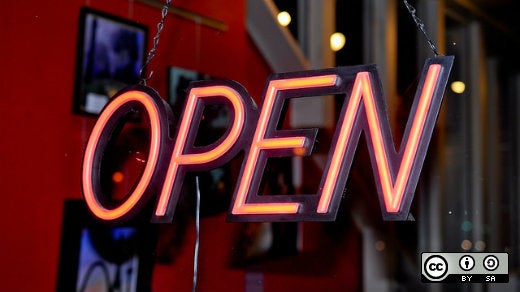In a previous article in this series, I wrote about front-line engagement in Japan and explained how communication technology is enabling ownership of decisions, especially among front-line workers. Moreover, in The Open Organization, Jim Whitehurst presents "the OODA Loop," a model for decision-making that emerged from the United States military, where it originated as a model for making rapid decisions in combat.
Clearly, decision-making is an important consideration in any organization. But open organizations refine the process. I think we should take a closer look at the decision-making process and how open organizations are making this process more efficient by virtue of their particular characteristics (which I make a point of highlighting in my explanations).
A decision's four factors
First, I must define a good decision-making process. It involves four factors:
Quality: Does our decision successfully address a particular issue and actually resolve it? Does the outcome of the decision match what we'd hoped for?
Speed: How quickly are decisions made and executed?
Execution: How efficiently is the implementation and execution process of the decision managed?
Effort: What is the expense of time, energy, and assets to achieve what was decided? Is it too much or too little?
Let me explain these dimensions in more detail. I've given several presentations on decision-making, which you can also review.
Making quality decisions
A decision's status as a "quality decision" depends on several relevant factors: Was there a good analysis of potential risks? Were alternatives evaluated against the final decision? Did the decision take into account the ability to execute what was decided? As the trend toward open organizations grows, we will increasingly see front-line, engaged peers asking these detailed questions—not just managers. They will attack issues, come up with their own information, make their own decisions, and self-evaluate the results of those decisions. Information gathering is a skill, and the more these front-line peers participate in this activity, the more skilled they will become. They should learn to gather as many relevant and reliable facts as possible, and to make what facts they have as visible as possible for all to see and understand (i.e., transparency). They will learn to have robust discussions (i.e., collaboration) on these facts, which include multiple voices (i.e., inclusivity), and come up with decisions that all can both agree on and buy into. Armed with these facts and necessary buy-in, they will be in a strong position when presenting their decision to outsiders or top management.
Over my career, I followed this method when it comes to information gathering. I tried to force myself to avoid early judgments. I tried to stay in an open-minded, information gathering mode as long as possible until it adversely affects reaching a timely conclusion. This has helped me come to a quality business decision.
Making speedy decisions
Decision-making speed is influenced by the speed of information one gathers, shares, and distributes to others. It is also influenced by trust; low levels of trust will slow the information-gathering process. Fast decision-making can save money and improve profit, so it is financially important. It can also improve customer satisfaction and employee morale. Considering the above benefits of quick decisions, a company can create a competitive advantage over slower companies if it devises ways to speed up the decision-making process. This is one of the reasons open organizations can be so powerful and competitive: Engaged front-line people see problems and implement action plans quickly; large corporations tend to be weaker in this area.
With the benefits of quick decisions in mind, I often try to determine if the decision can be modified later (i.e., adaptability). If it can, I push for quick decisions and keep a close eye out for the need for later modification. Open organizations that really want to be competitive should explore using decision-making speed as a business competitive advantage (and I've actually prepared a full presentation on how to do that; I've presented it in both English and Japanese several times, and it's compatible with OODA Loop-style thinking).
Executing on decisions
This is the oft-forgotten part of the decision-making process. Who is going to put the decision into action? Are the abilities, skills, capacities, and assets available to execute the decision? Quite often it is excellent execution—not the brilliance of the decision—that creates competitive advantage.
Projects that incorporate no plans for execution will die quickly. To increase the likelihood of success, I like to create a Gantt chart of what must be done to completely implement a decision. Then I ask people about the tasks required for implementation, and determine the time each task should be completed. Put all that data into a chart and present it to everyone on your open team. Then let the group discuss each task and decide for themselves when each should be completed. Finally, have the group assign milestones to monitor progress. Ask directly: Who is dedicated to executing the decision according to the timeline you've established? Who will promote to get funding? Who will take political and career risks when making recommendations? Armed with the answers to these and other questions, the concern for decision execution will be answered.
With everyone following the tasks in the Gantt chart, members of your open organization can monitor the results of each task and make corrections as needed (i.e., transparency and adaptability). They hold themselves accountable.
Making the effort
Like execution, effort and resources allocated to the decision are often forgotten in the decision-making process. If not monitored carefully, your work can consume far more resources than the project warrants.
Here I am specifically referring to the time and resources a team spends throughout the decision-making and execution process. What is the trouble caused by (and effort applied by) all involved? How much emotional energy is spent? Of course, completing a project means spending some resources—but those must not outweigh the benefits you hope to gain by implementing the decision.
You must manage this balance between time and resources—a process that itself could influence your work, considering the value of the project. Many have heard the expression "analysis paralysis"; sometimes, the analysis might not be worth the time, energy, and resources necessary to undertake it.
As these front-line, self-managed, open organizations become more common, I'm sure we will see the above decision-making process in action on a large scale.






Comments are closed.